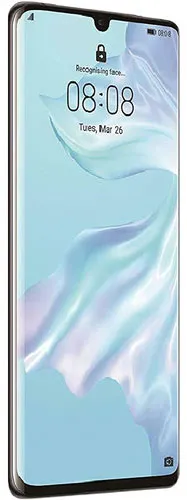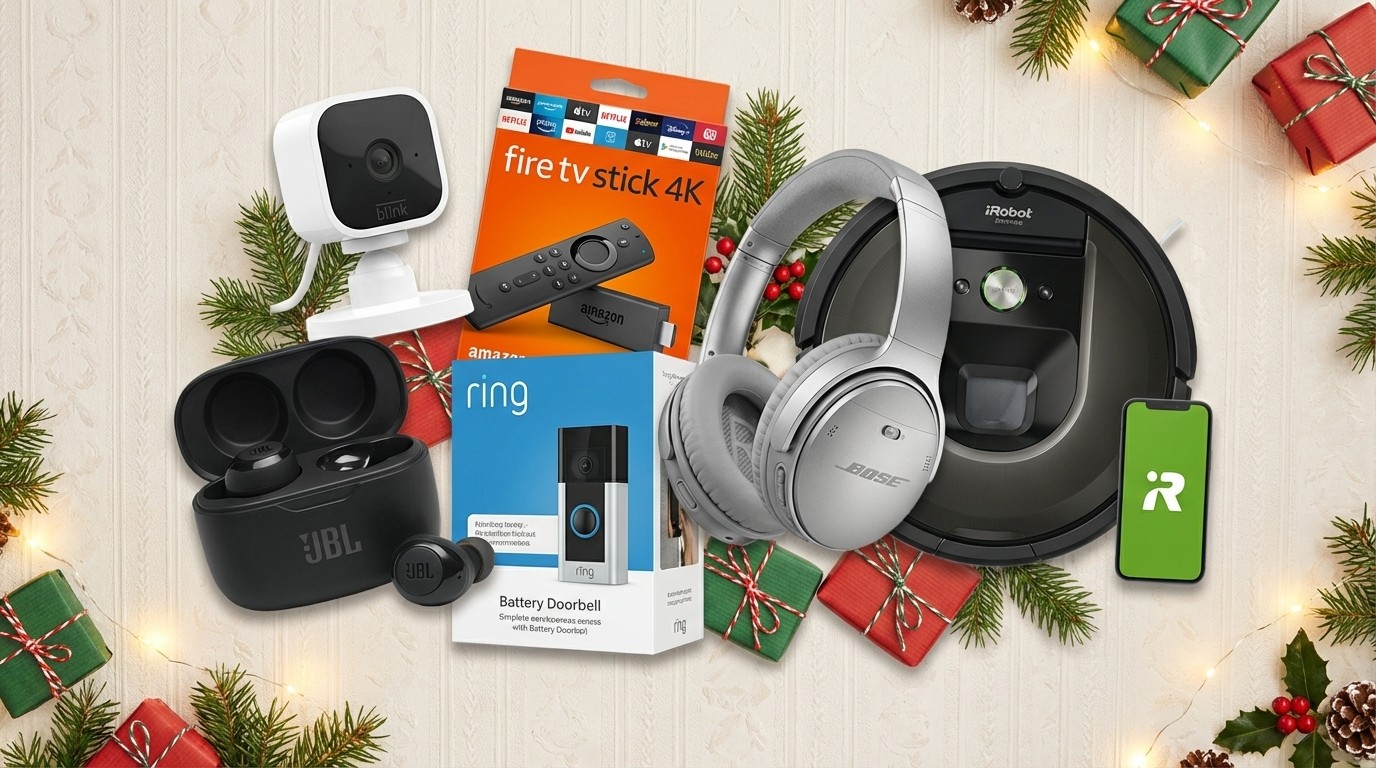Huawei P30 Pro Review: A Photography Revolution
Armed with a quartet of cameras and seriously innovative software, the Huawei P30 Pro is the best thing to happen to mobile photography yet. It's a pretty awesome phone, too.
Editor's Note: As of May 15, Huawei has been blacklisted from doing business with U.S. companies, and its future phones will not be able to license Google services and many aspects of the Android operating system. While devices that are already on sale (including the P30 Pro) supposedly are not affected and may continue to receive support, this is something anyone interested in purchasing Huawei's products should be mindful of.
Huawei is on a tear. With last year's P20 Pro, the Chinese tech giant demonstrated it could build a mobile camera that could rival and, at times, exceed the best work from Google, Apple and Samsung. With the Mate 20 Pro, Huawei was one of the first to offer both an in-screen fingerprint sensor and reverse wireless charging, as well.
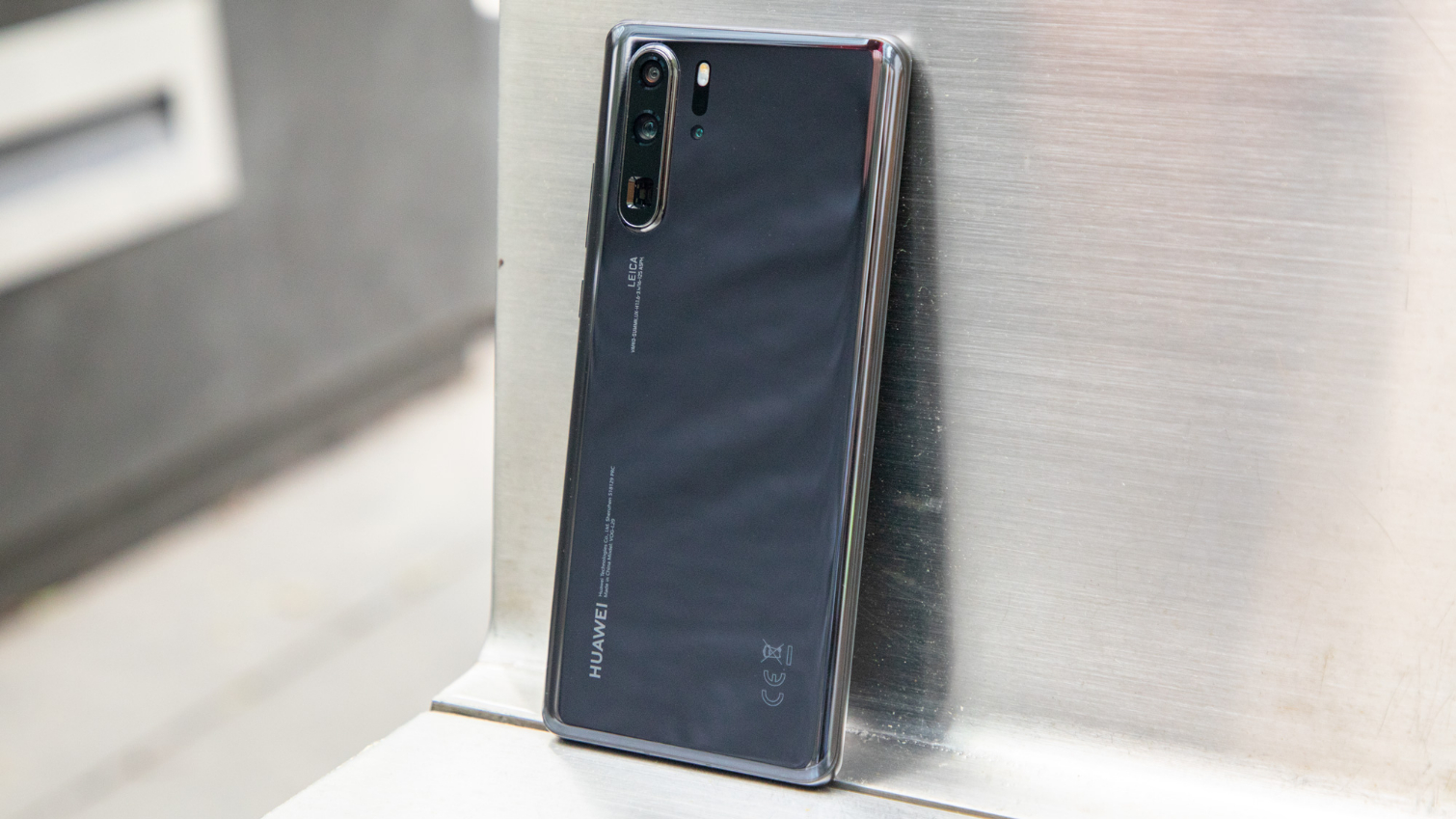
The P30 Pro builds on those successes and takes mobile photography to a new level. This is a phone that will delight you in ways you don’t expect, especially when you capture crisp zoomed-in photos you couldn't dream of getting with any other device. It's capabilities in low light even outshine the Pixel 3's at times.
That's not to say there isn't room for Huawei to improve — and, of course, we’re still not-so-patiently awaiting the day when the company will find a way to officially ply its wares in the U.S. But the P30 Pro still firmly lands among the year's best smartphones precisely because it's far greater than the sum of its parts.
Huawei P30 Pro Price and Availability
The Huawei P30 Pro is available in the U.K. from retailers like Amazon starting at £899 for the model with 128GB of storage, and £1,199 for the 512GB version. Although the device is sold in five colors — Midnight Black, Pearl White, Aurora, Breathing Crystal and Amber Sunrise — the last option comes exclusively in 512GB spec. The other three colors are limited to the base storage option, and the P30 Pro only accepts Huawei's proprietary nanoSD cards.
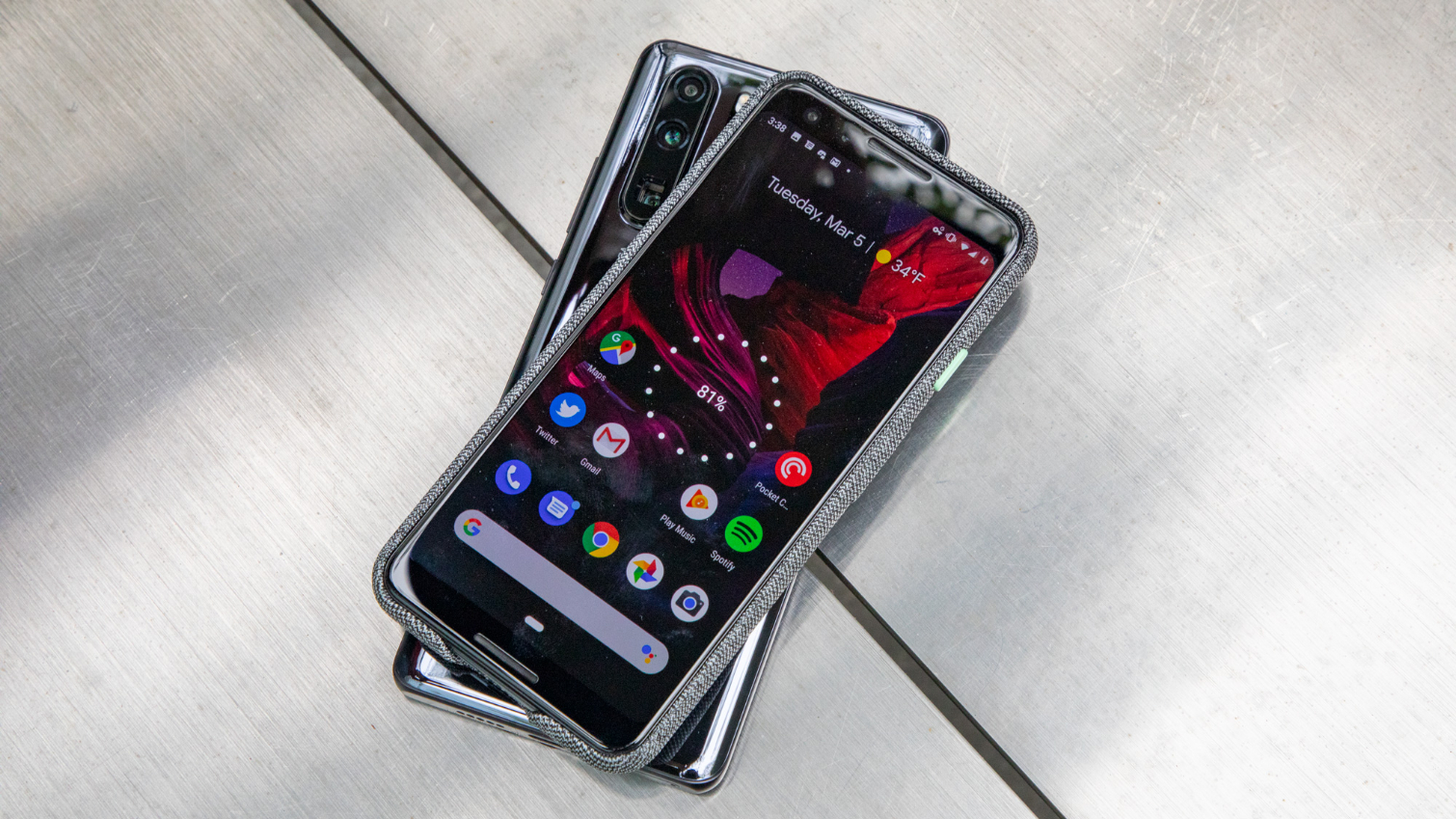
Normally, this would be the part of the Huawei phone review where I tell you there's no legitimate way to buy this device in the U.S. But an interesting thing happened in mid-April, when B&H Photo announced it would carry the P30 Pro later this spring for $899.
The devices B&H is selling still aren't specific to the U.S.; they're actually imported from Latin America, and they don't work on all carriers in the States. However, they do support most of the bands used by GSM networks like T-Mobile and AT&T. They also come backed by a one-year warranty from B&H, to make up for the lack of official support from Huawei.
Get instant access to breaking news, the hottest reviews, great deals and helpful tips.
MORE: Huawei Has Blown Past the iPhone, and Samsung Is Next
Because of that warranty, we'd recommend B&H as the safest way to go if you're looking to nab a P30 Pro and use it in the U.S. The phone costs $899, though B&H splits the difference between the U.K. models by only offering the 256GB configuration. Unfortunately, that means the 512GB-only Amber Sunrise variant isn't available through B&H's website.
Huawei P30 Pro Specs
| Price | £899/£1,199 (U.K.); $899 (U.S.) |
| OS | Android 9 Pie with EMUI 9.1 |
| Screen Size (Resolution) | 6.47-inch LCD (2340 x 1080) |
| CPU | HiSilicon Kirin 980 |
| RAM | 8GB |
| Storage | 128GB/512GB (U.K.); 256GB (U.S.) |
| Expandable Storage | Yes; nanoSD |
| Rear Camera | Four: 40-MP wide angle (ƒ/1.6); 20-MP ultra wide angle (ƒ/2.2); 8-MP telephoto (ƒ/3.4); time-of-flight depth sensor |
| Front Camera | 32 MP (ƒ/2.0) |
| Battery Size | 4,200 mAh |
| Battery Life (Hrs:Mins) | 12:53 |
| Water Resistance | Yes; IP68 |
| Size | 6.22 x 2.92 x 0.33 inches |
| Weight | 6.77 ounces |
Design: The color changes everything
The P30 Pro is packed with some seriously exciting technology. With its periscope zoom lens that sees the outside world through a prism; its display glass that vibrates to deliver sound without the need for a conventional earpiece; and its optical, in-screen fingerprint sensor, Huawei’s latest flagship checks all the boxes regarding technical innovation. Which is what makes it all the more perplexing that, at least from the outside, the P30 Pro is a decidedly ordinary-looking phone.

In fact, it's more or less an amalgamation of every other $1,000 flagship out there. There's a teardrop notch up top, a trio of vertically stacked cameras jutting out from the backside and a powder-coated aluminum frame joining two identically curved slabs of glass. The P30 Pro is quite heavy — nudging 7 ounces — no doubt because of its beefy 4,200-mAh battery and massive 6.47-inch display.
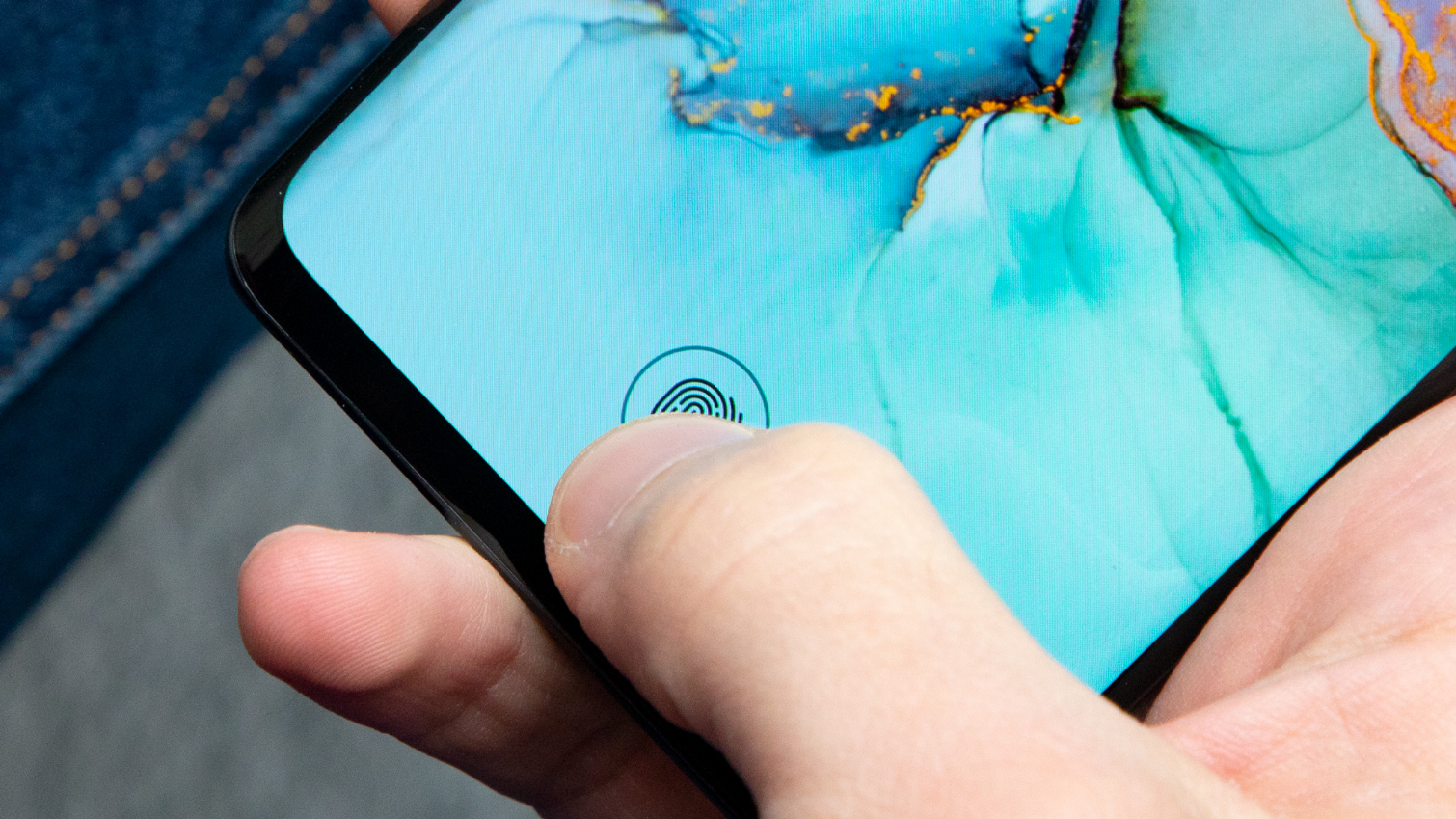
The result is a bulky, imposing phone with few recognizable features — at least until you see it in a hue that isn't Midnight Black. Huawei is no stranger to bold colorways, having kicked off the gradient trend with the Twilight P20 Pro last year. And if you like the way that looked, you'll love the P30 Pro's other flavors — shimmering blue-green Aurora, calm and icy-white Breathing Crystal, or fiery Amber Sunrise. Personally, I'm partial to the latter, as it gives the device a sorely needed dash of personality.
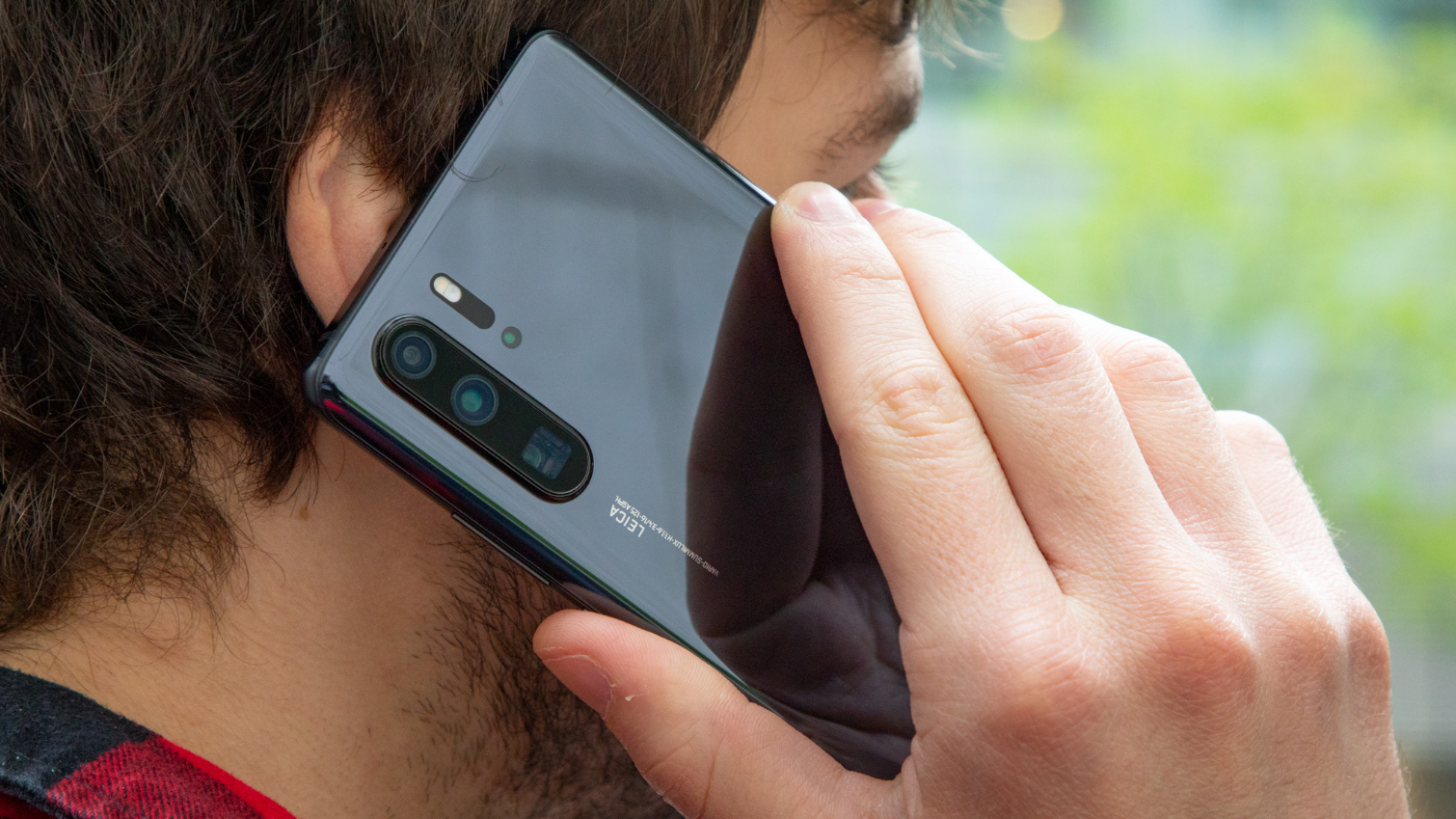
The P30 Pro can survive underwater up to 30 minutes at a maximum depth of 5 feet, and supports wireless charging in both directions. Unfortunately, there's no headphone jack to speak of and Huawei doesn't pack in a USB-C adapter, though you at least get complimentary wired headphones.
Camera: The new camera phone to beat
After demonstrating the power of three lenses with the P20 Pro, Huawei's gone back to the drawing board and decided to add one more for good measure.
The P30 Pro has a total of four cameras on the back, though they're each unique. The one you'll be using most of the time is a wide-angle lens backed by a 40-megapixel sensor, with an ƒ/1.6 aperture. Then there's a 20-MP, ƒ/2.2 ultrawide shooter, better suited for landscape shots, followed by an 8-MP, ƒ/3.4 telephoto underneath it capable of 5x optical zoom. Finally, there's a so-small-you'll-miss-it time-of-flight sensor to the right of the main stack, under the flash.

But let's skip back to that telephoto camera for a minute, because it's an unusual one. For starters, it's square — so you can actually tell it apart from the rest of the quartet. And the reason it's so shaped is because what you're actually seeing there isn't a lens, but rather, the reflection of one.
The P30 Pro is the first smartphone in the world (narrowly beating the just-launched Oppo Reno) with a periscope optical zoom lens. The sensor and optics sit perpendicular to the area of focus, inside the body of the phone, and "see" through a prism — the reason for this being that a conventional 5x power lens would be much too thick to fit straight on.
While most high-end handsets that have telephoto lenses make do with only 2x or 3x optical zoom, the P30 Pro's 5x magnification is strong enough to be useful. And because it's so powerful, I can guarantee you've never taken photos with a phone that looks anywhere near as good from the same distance. It's truly a revelation.
Compared with our leading camera phone, the Pixel 3, the difference is night and day. Google's clever, AI-boosted Super Res Zoom tech can fudge 2x digital zoom into looking like optical, but it's woefully in over its head when you ask it to draw any closer. Surprisingly, the P30 Pro can pull off a similar trick by refining cropped shots from that 5x lens into what Huawei calls 10x Hybrid zoom. And although it's hard to imagine a scenario in which you’d ever use it, you can ratchet the pure digital zoom all the way up to 50x. (Though, the propensity of camera shake when shooting from such a distance makes this mode functionally useless, technically impressive though it is.)
MORE: Huawei Mate X Hands-On Review: Samsung Should be Scared
And that's just the zoom lens! From a normal distance, the P30 Pro's 40-MP primary super spectrum camera is capable of some truly impressive, phenomenally balanced shots, thanks to a combination of pixel binning, object recognition-based processing and a new-fangled image sensor design that employs yellow photodetector sites instead of green, because yellow allows more light to filter through.
But lest I get sidetracked with the nerdy details, you need only look at the results to validate Huawei's approach. The P30 Pro captures all the gradations of color in the Lamborghini's matte silver paint that the Pixel 3 renders as noisy splotches. The texture of the concrete garage floor is tangible in the shot from the Huawei flagship, the bright red of the supercar's brake calipers bursts from the wheels' shadows with intensity, and even the seams and little specular blips in the painted brick wall are more prominent on the P30 Pro.
Interestingly, the farther I zoomed in, the more I found that the details that Huawei's algorithms hammer with sharpness and contrast are actually not quite as crisp as what the Pixel 3 produces — though I'd still lean toward the P30 Pro's rendition here because the bigger picture has a presence that Google's plainly lacks.
I found a similar story when I snapped a pair of shallow depth-of-field portraits with the P30 Pro and Galaxy S10 Plus at Brooklyn's famous Botanical Garden. Huawei's shooters again delivered an image that was slightly less precise, but the subject's skin tone was rendered more truly to how it actually appeared in those conditions, and the deeper contrast lends a dramatic, produced quality to the portrait that I prefer.
That said, the P30 Pro's time-of-flight camera, which is used to capture a wealth of depth information for more accurate bokeh in these scenarios, didn't necessarily win me over. The blurring effect certainly becomes more pronounced as your eyes peer further into the background, but the leaves immediately behind the subject seem almost hazy, like they were poorly Photoshopped after the fact.
We begin to see the limits of Huawei's postprocessing capabilities with this next comparison between images of a cluster of flowers. I have no doubt that the P30 Pro could pump out an image about as crisp, pleasing and balanced as what the S10 Plus managed. But Huawei's Master AI technology, which dynamically responds to objects it recognizes by tuning aspects of the shot in front of your eyes, simply tries too hard sometimes.
The camera software was clever enough to know that I was shooting a flower here, and automatically switched to Portrait mode and ratcheted up the saturation. I really could have done without the overly vivid colors, though. Through the lenses of the P30 Pro, it almost seems like we're looking at a different flower, with the subtle blood-orange hues and the texture of the petals that are visible in the S10 Plus' attempt being glossed over in the pursuit of a punchier shot. Thankfully, however, you can turn off Master AI, and at times I suggest you do.
As it turns out, the P30 Pro's ultrawide lens doesn't provide quite as wide a perspective as the Galaxy S10 Plus can, judging from this serene image of a lake in the middle of the botanical garden. While I feel as though Huawei's Master AI again took liberties it shouldn't have, especially with respect to the greenish cast to the white balance, the increased brightness, sharpness and detail in the shadows of the distant trees evident in the P30 Pro's rendition make it the more appealing shot, at least to my eye.
Huawei has stepped up its night photography capabilities with the P30 Pro in a big way. Where its predecessor could achieve a peak ISO of 102,400, the new model shatters that record by quadrupling it. The P30 Pro can get all the way up to 409,600 — which partly explains how my colleague Richard was able to capture such a phenomenal photo of the London Eye Ferris wheel using its plethora of lenses.
MORE: Seeing the Huawei P30 Pro 50x Zoom In Action Is Really Impressive
The Pixel 3's Night Sight mode is one of the best low-light photography features in the business today, but Huawei's Night Mode actually predates it. Now in its second generation, the feature is even more magical. While Google's tech appears to prioritize color intensity, Huawei's is able to maintain the detail that Night Sight so plainly loses. From the spokes in the wheel to the lights themselves and even ripples in the river, the P30 Pro makes exceedingly dark photo ops that would typically be far too challenging for a phone suddenly attainable.
For a deeper look, check out Richard's camera shootout between Huawei's and Google's flagships. Personally, I wouldn't go so far as to say one company's software is better than the other's in all instances, but they're both definitely vying for the top spot.
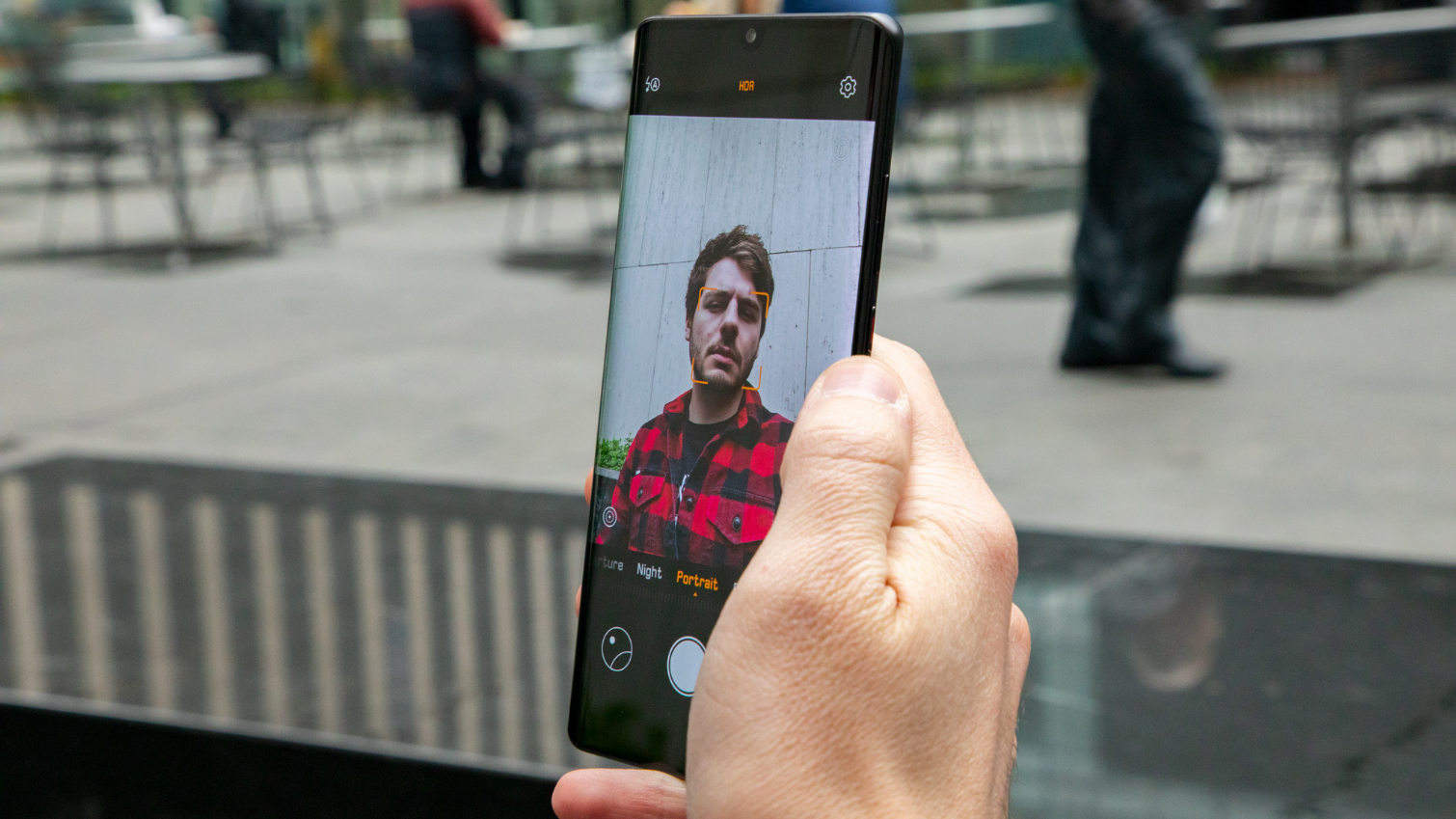
Armed with a 32-MP front-facing camera, the P30 Pro can capture selfies that are far more detailed than what most phones produce. And even though the device triples down on those megapixels, the result is still brighter than a similar shot from the Pixel 3 — a remarkable feat, given that image sensor complexity typically comes at the expense of exposure.
Ultimately, I think I slightly prefer the Pixel 3's contrast and treatment of my skin tone and hair color, but the level of detail you unlock with all those megapixels is incomparable. It really sets the P30 Pro apart.
Display: Good enough
The 6.47-inch OLED display in the P30 Pro isn't radically different from the panel in last year's P20 Pro. At 2340x1080 pixels, it's about the same resolution — only with an additional 100 vertical pixels — and doesn't get any brighter, either.
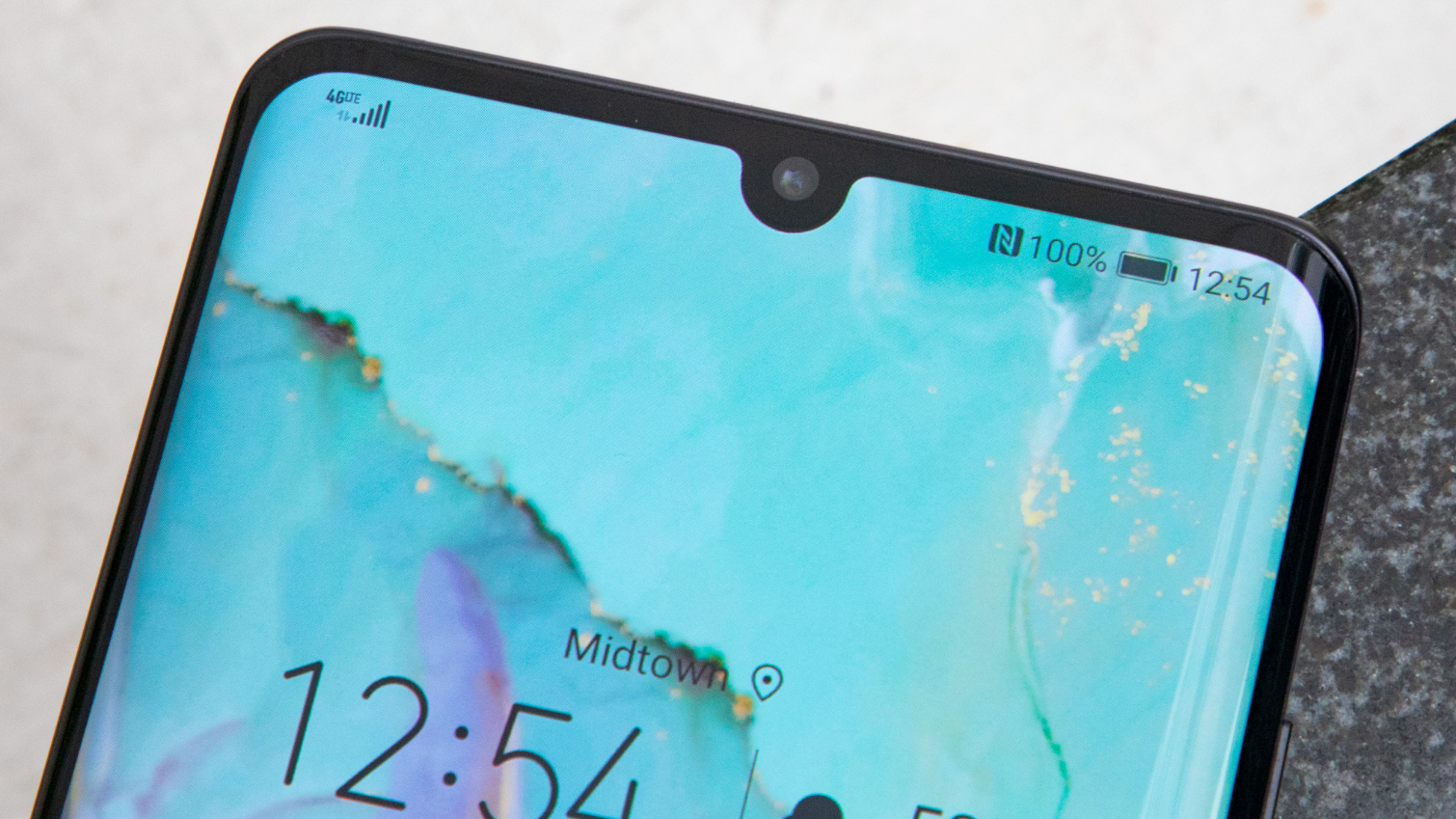
Mind you, that's not the worst problem to have; the P20 Pro's display was pretty solid all around. However, it would have been nice to see Huawei really punch up the screen year-over-year. Alas, the P30 Pro's 444-nit peak full-screen brightness is a shade dimmer than the 461 nits of its predecessor, and remarkably outshined by the Galaxy S10 Plus' 625-nit result.
Shifting the subject to sharpness, the story doesn't get any better for Huawei. The S10 Plus sports a significantly higher pixel density than the P30 Pro — 522 pixels per inch in Samsung's handset, compared with 398 nits for Huawei's.
In other words, the P30 Pro's display certainly isn't the brightest or the crispest. That said, I still had an enjoyable time watching the trailer for the upcoming Sonic the Hedgehog flick on this screen (well, as enjoyable a time as you couldhave with that trailer). The blue blur's destructive acrobatics played out fluidly on the OLED panel, and I could regretfully see every strand of Sonic's needle-like fur, every ripple in his disproportionately muscular legs and all 32 of his baffling human-like teeth.
A lot of that had to do with the P30 Pro's precise color reproduction — among the finest we've seen in any mobile display to date. The device's Delta-E color accuracy score of 0.09 ranks among our all-time best, even edging the S10 Plus' 0.29 result. (Numbers closer to zero are better.) Additionally, the P30 Pro's ability to render 180.8 percent of the sRGB color space indicates robust yet restrained hues that aren't as obnoxiously oversaturated as what some competing handsets provide.
Sound: Not quite a powerhouse
While I was confident the P30 Pro's screen would deliver as I entered this review, I didn't know what to expect from the device's Acoustic Display technology. This system uses electromagnetism and vibration to fire sound through the glass near the top of the handset, and for phone calls, it happens to work quite well. The Phone app actually instructs you where to position your ear on the screen for maximum clarity. And sure enough, calls came through loudly enough; I noticed no discernible difference from using a conventional earpiece.
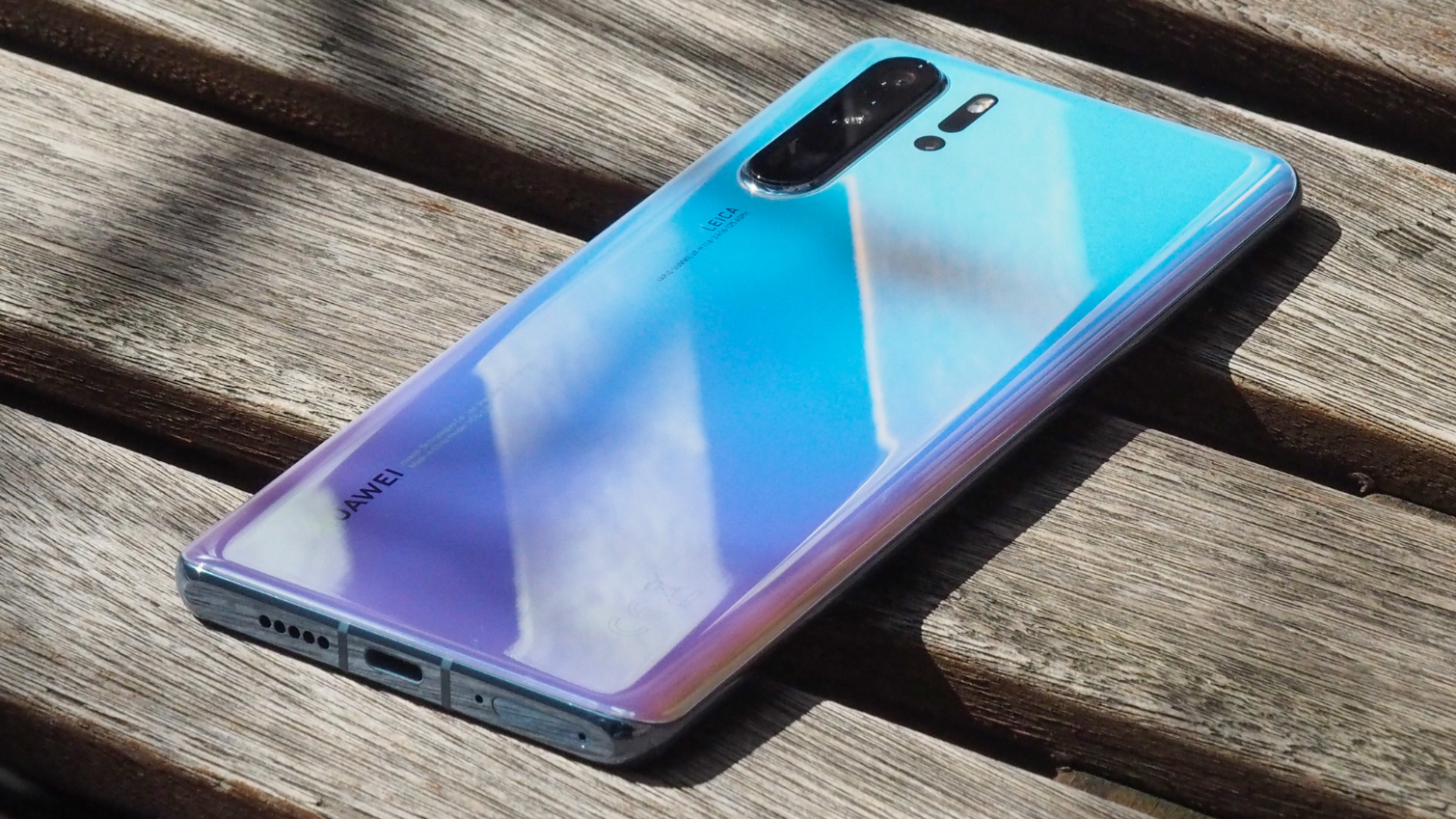
The benefit of the Acoustic Display system is that it frees up more room for the P30 Pro's screen and doesn't necessitate shoehorning a tiny speaker up into the notch. However, as I discovered, the P30 Pro doesn't use Acoustic Display when playing back media; rather, it routes all audio through one bottom-firing mono speaker, which is, sadly, ill-equipped for the job.
Many flagships today — including the latest from Google, Samsung and Apple — all use stereo speakers. The recently released LG G8 ThinQ, while not being a terribly great smartphone, has a killer Crystal Sound OLED system similar to what Huawei's achieved with the P30 Pro, expect it uses the screen for all audio, not only calls. Without a second speaker, the P30 Pro can still get plenty loud, but the sound is tinny and compressed.
I strained to hear the bass behind Weyes Blood's "A Lot's Gonna Change" in a whirlwind of shimmering strings and Natalie Mering's quivering croons. Even with Dolby Atmos software lending a boost to the emotional track, the whole affair was hamstrung by that lone speaker. The Pixel 3 was perhaps a hair lower in overall volume by comparison, but the warmth and space that Google's device added to those orchestral swells made it the better listening experience by far.
Performance: A beat behind, but still powerful
Like all Huawei"s handsets, the P30 Pro is powered by the company's own silicon. In this case, it's a 7-nanometer Kirin 980 — the very same chip inside the Mate 20 Pro — doing all the heavy lifting. And while the benchmarks would suggest that it's not quite at the level of Qualcomm’s Snapdragon 855, the real-world experience of using it is so fluid and uncompromising that the numbers don't seem to matter very much.
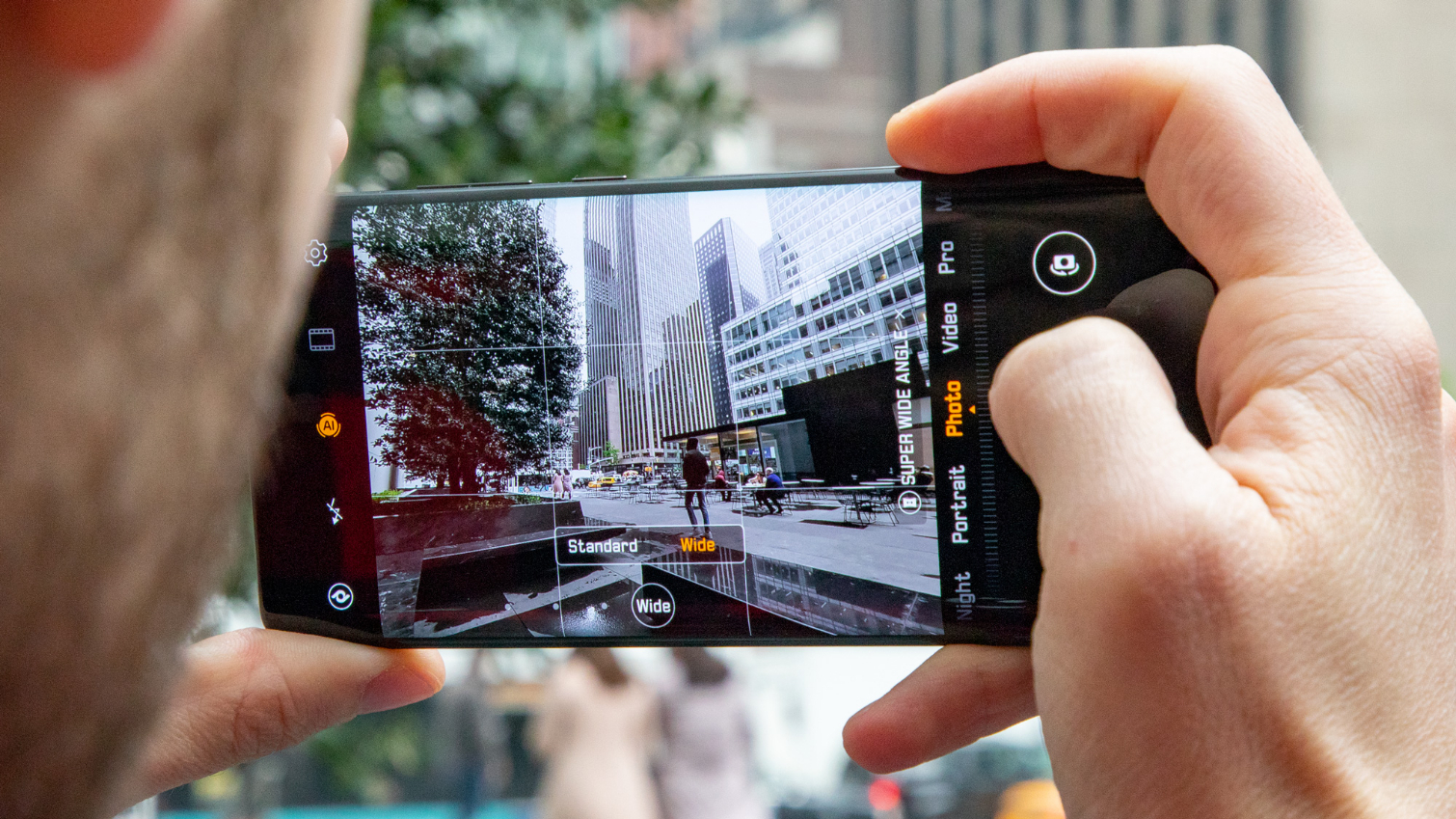
The P30 Pro stayed calm and composed — albeit a little warm at times — when I streamed YouTube videos while browsing Twitter in multiwindow mode, listening through a pair of Bluetooth headphones. Arcade racer Asphalt 9 looked as gorgeous ever, taking full advantage of the Kirin 980's powerful Mali G76 GPU. It's fair to say the frame rate wasn't the smoothest, though that has been the case for every Android phone I've played that game on — it just doesn't seem to be the most well optimized title in spite of its console-quality visuals, though the P30 Pro handles it as well as you'd hope.
It's only in comparisons with Snapdragon 855-powered handsets over the systemwide Geekbench 4 test where Huawei's CPU shows its limits. While the LG G8 ThinQ and Galaxy S10 Plus managed multicore scores of 10,958 and 10,752, respectively, the P30 Pro hit a wall at 9,724.
MORE: Google Pixel 3 Sales Slump Due to High-End Phone Crisis
The P30 Pro also fell short in 3DMark's Sling Shot OpenGL ES 3.1 graphics test, where it fell well below the latest Snapdragon-powered handsets with a score of 4,066. The S10 Plus' 5,468 far exceeded it, and even the Pixel 3 XL performed better at 4,396.
Battery: A new flagship champ
Like the Mate 20 Pro, the P30 Pro packs a beefy 4,200-mAh battery that can recharge exceptionally quickly, thanks to Huawei's 40-watt SuperCharge technology. With the ability to take the device from zero to 70 percent in just 30 minutes, it tops up faster than just about any other smartphone.
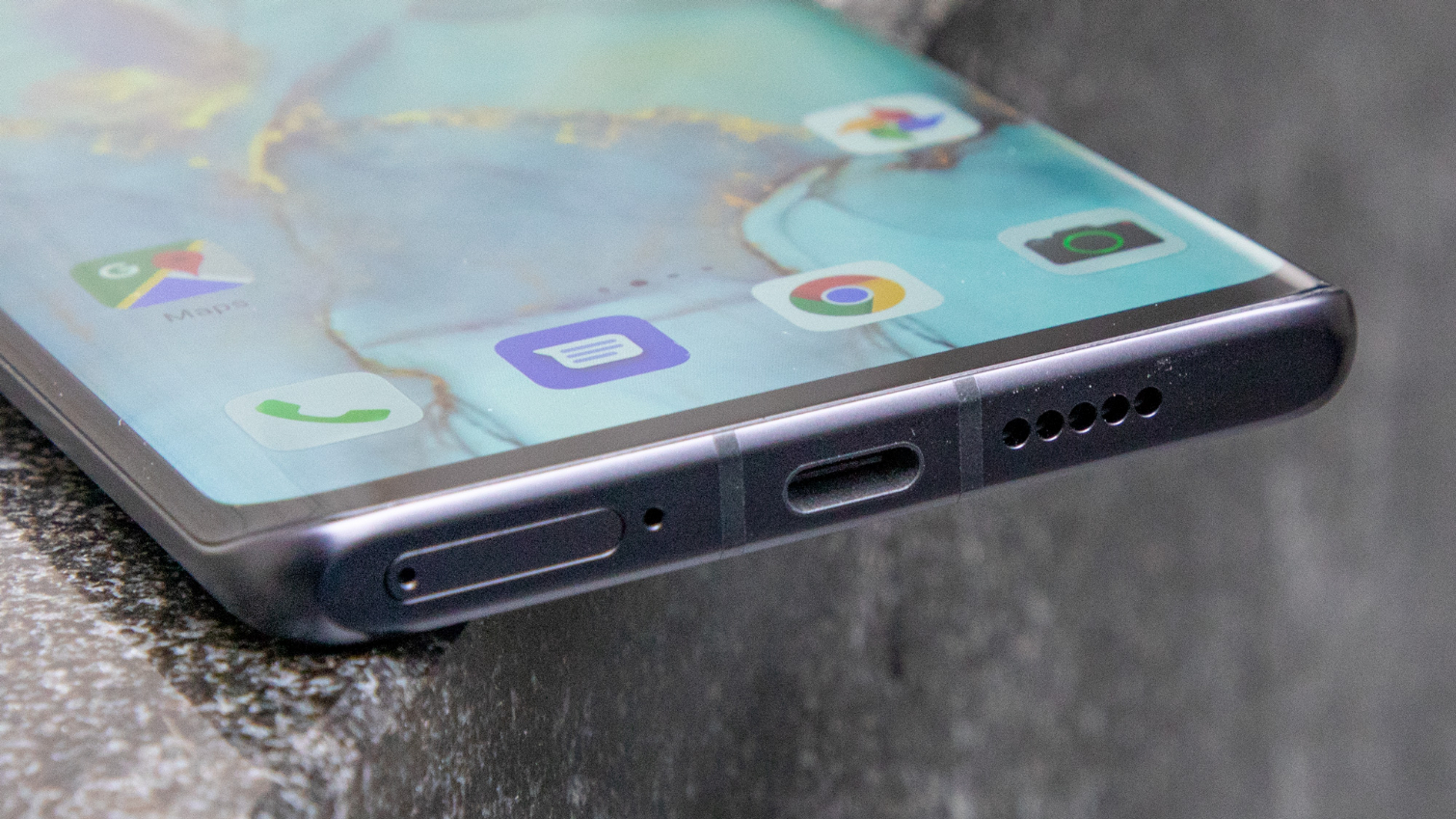
But the really impressive thing is how long that massive battery takes to deplete. The P30 Pro lasted an impressive 12 hours and 53 minutes in our battery test, where the device cycled through loading web pages over T-Mobile's LTE network until it ran out of power.
The P30 Pro's battery life leads the premium pack.
That result edges the Galaxy S10 Plus, which called it quits after 12 hours and 35 minutes, and far exceeds the longevity of the iPhone XS Max, which managed 10 hours and 38 minutes. There are cheaper handsets out there with less powerful and more efficient processors, like the 15-hour and 32-minute Moto G7 Power, that last a bit longer than Huawei's flagship. But right now, in the premium space, the P30 Pro leads the pack.
Huawei's phone also boasts some exciting new technology. As with the Galaxy S10 series, the P30 Pro is capable of wirelessly charging other devices that support Qi induction, by placing them on top of the phone's glass back. It's not the fastest method of charging a pair of Bluetooth headphones or another handset, of course, though it will help in a pinch.
Software: Here we go again
Every time Huawei releases a new flagship phone, I pray the company will surprise me with a radically new approach to its Android software — one that's pretty, intuitive, simple and respectful of my time, and matches the quality of its hardware.

Unfortunately, that day hasn't come with the P30 Pro. EMUI 9.1 — now based on Android 9 Pie — is simply more of what's come before. It's been well over a decade since the original iPhone launched, and while the rest of the industry has mercifully matured past the phase of feverishly cloning iOS, Huawei is still trapped in a squircle-shaped prison of its own making.
But my beef with EMUI goes beyond aesthetics. Rather, it's more to do with the software's propensity to muscle its way into your business. I was surprised when I plugged in a pair of Pixel USB-C headphones, only to be met with a rebuttal from my phone that while my buds worked, I really ought to use a Huawei-branded equivalent instead.
While the rest of the industry has mercifully matured past the phase of feverishly cloning iOS, Huawei is still trapped in a squircle-shaped prison of its own making.
I could also do without the barrage of preloaded apps on the P30 Pro — some of which duplicate Google software and services that you likely already use, and some that simply have no good reason for being there, like Huawei's own app marketplace. You can uninstall a good chunk of the bloat, but you can't scrub it all; if you're annoyed, find your favorite third-party launcher and at least put what you can out of sight.
MORE: Best Smartphones on the Market Now
The P30 Pro offers a few styles of gesture controls to replace the standard three-button navigation system. One is represented by a movable software button that almost acts like a joystick, though, frankly, that scheme is far too strange to get accustomed to without a lot of practice. The other is more similar to what you get from the iPhone XS, except the Android back button is replaced by swiping in from the left or right edge of the display. It seems great on paper, but I found that the curved sides of the P30 Pro's screen sometimes made that action difficult to trigger — especially when I kept the phone in a case.
Bottom Line
If you want the finest camera phone money can buy with the best battery life, then the P30 Pro is the beginning and end of the conversation. Although it might not always top the Pixel 3's best shots in every instance, it's far more versatile because of the plethora of high-megapixel lenses, each suited for a special purpose and scenario.
Once you get past those two strengths, the P30 Pro is still about as strong as any high-end handset out there, though it struggles to stand out. The design is a bit too familiar, the display is good but not great compared with the Galaxy S10’s, and the processor is a hair slower than what Qualcomm's been pumping out lately. Then, of course, there's the software, which could really use a comprehensive redesign.
EMUI continues to be the one blight on Huawei's phones. But if it doesn't bother you, or you can see past it, the P30 Pro has the power to dazzle. For capturing the moment, I'm not sure there's another smartphone I'd rather have in my pocket.
Credit: Tom's Guide
Adam Ismail is a staff writer at Jalopnik and previously worked on Tom's Guide covering smartphones, car tech and gaming. His love for all things mobile began with the original Motorola Droid; since then he’s owned a variety of Android and iOS-powered handsets, refusing to stay loyal to one platform. His work has also appeared on Digital Trends and GTPlanet. When he’s not fiddling with the latest devices, he’s at an indie pop show, recording a podcast or playing Sega Dreamcast.
